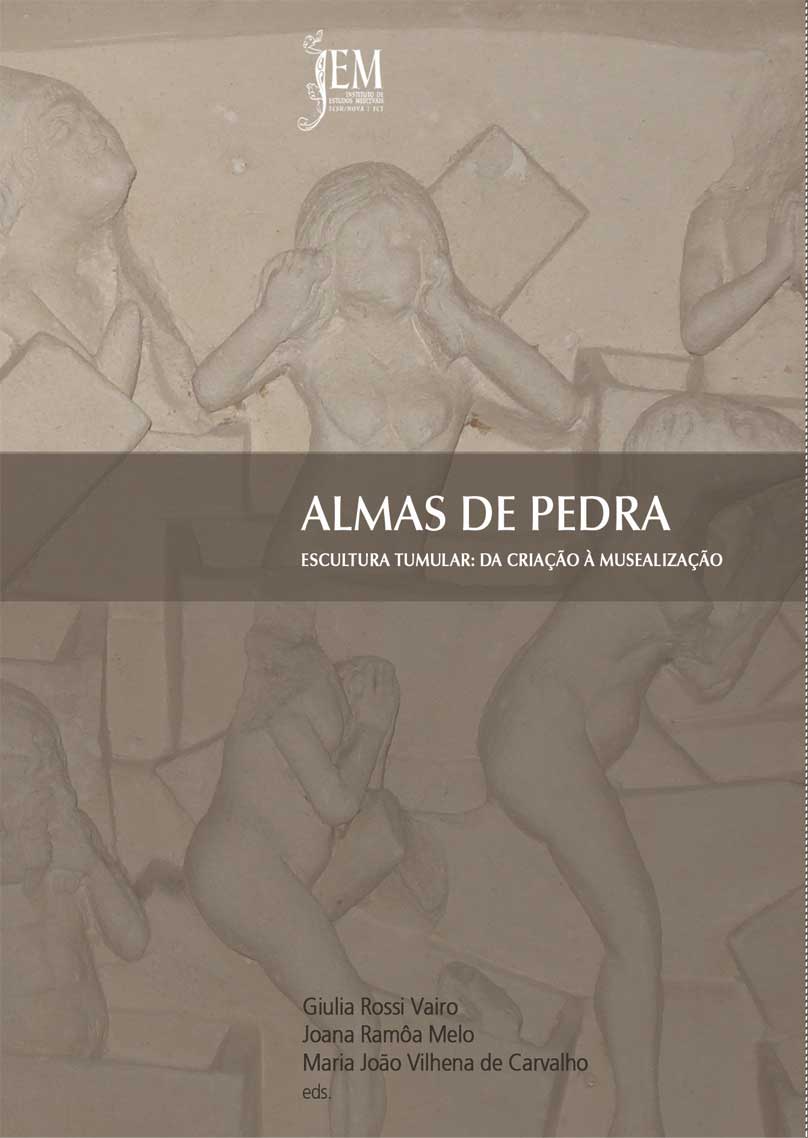Book launch: “Almas de Pedra. Escultura Tumular: Da criação à musealização”
09.2019
NOVA FCSH, Lisbon

Issue 20 of the “Estudos” (Studies) series brings together contributions by researchers, museologists and restorers of various nationalities who aim to rethink, understand, question and put into perspective the medieval tomb as an artistic, aesthetic, spiritual, historical, anthropological, sociological and cultural phenomenon, approaching this object across its entire cycle of existence, from the creative processes to its current usage as a legacy of the past.
The innovative facet of this collection of studies stems from broadening this field of analysis, striving to reach beyond the more traditional research approaches to these pieces as products of medieval times. The aim is thus to stimulate a productive debate that also addresses them as works that “speak” to our present time and, as such, should be received, exhibited and interpreted with a true historical sense and in homage to their (still current) pertinence. In fact, beyond the evolutions in tomb making processes, the frequent manipulation of tombs and, above all, their de-contextualisation, continue to present their researchers with challenges of various types. Indeed, we must continue to understand the impact of such dynamics on the understanding of funerary monuments, seeking to decode them both in the light of the original context of their production and the various other contexts in which they were and are received. Moreover, it is important to consider the most appropriate ways of respecting and valuing tombs as pieces exhibited in museological contexts. Developing the debate on the scope and opportunities for enhancing knowledge and appreciation of the monuments preserved in situ, through providing visitors with interpretative keys for their understanding, is of equal importance. Another line of understanding explored in this volume is that of materiality, both original and superimposed, as well as the criteria for intervention in these works, with a view to their restoration, recovery and conservation as a heritage legacy for future generations.
The book, published with the Scientific coordination of Giulia Rossi Vairo, Joana Ramôa Melo and Maria João Vilhena de Carvalho, brings together 27 texts written in Portuguese, Italian, French, English and Spanish, including 1 introductory study presenting a global reflection on the theme, 19 monographic studies and 6 research project presentations. The closing text, of an essayistic/artistic nature, finally launches some lines of thought that convey a more intimate encounter with the type of pieces dissected by the scientific gaze throughout the volume. This diversity of approaches is reflected in the book’s structure, organised into five sections and completed with a gallery of colour images.
The volume was jointly published with the IHA – the History of Art Institute of the School of Social Sciences and Humanities, NOVA University and CIEBA – the Centre for Fine Arts Research and Studies of the Faculty of Fine Arts, University of Lisbon and supported by the Foundation for Science and Technology, the Millennium BCP Foundation and Odivelas Municipal Council.
The publication is available here.